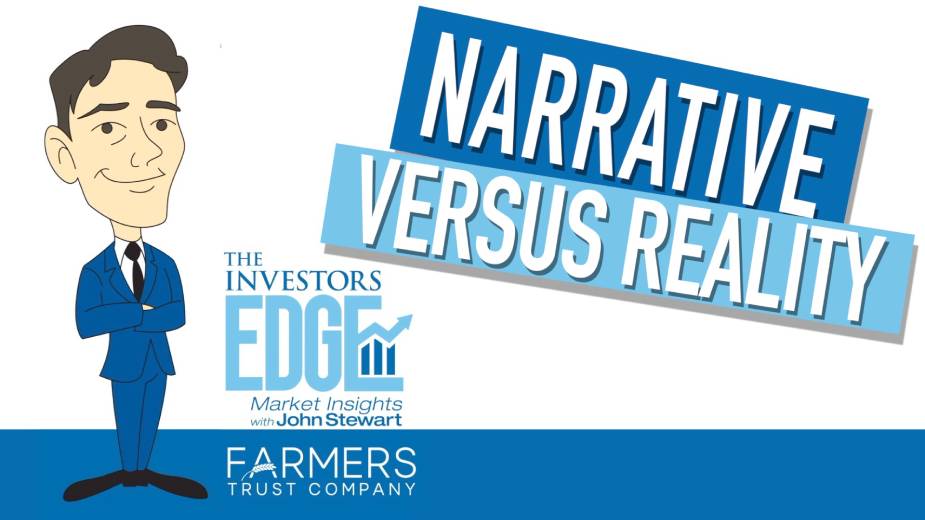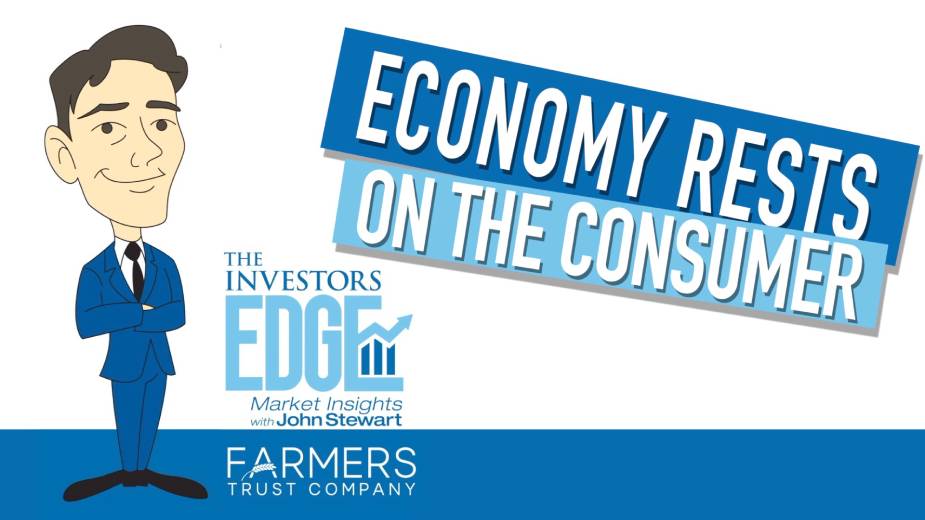Stocks Cheer Lower Inflation | The Investors Edge
By John Stewart, chief investment officer at Farmers Trust Co.
Week in Review: Stocks Cheer Lower Inflation
CANFIELD, Ohio — The headline consumer price index, or CPI, measure of inflation came in at 8.5% for the month of July versus the same period a year ago.
While 8.5% is still an uncomfortably high level of inflation, it is less than the 9.1% reading from last month, and it is less than the 8.7% reading that economists expected.
The news was good enough to send stocks soaring to their highest levels since late April based on the expectation that moderating inflation should allow the Federal Reserve to become less aggressive with interest rate hikes going forward.
Stabilizing prices will obviously help take some pressure off cash-strapped consumers struggling to pay bills, but a lot of damage has already been done. Keep in mind, lower inflation doesn’t mean prices are falling; it just means that they are rising at a slower pace.
Our concern is that earnings expectations for the next few quarters have been weakening even as stock prices have rebounded. Unless that trend changes, we may still be in for a few more bumps in the market road ahead.
Featured Insight: There Is No Free Lunch
When it comes to investing money, whether it be in stocks and bonds, real estate, or anything else for that matter, it is always important to keep in mind that there is simply NO FREE LUNCH!
Long-time viewers of the Investors Edge may recall that I did a segment on this topic a while back.
It bears repeating because it is a critical concept to understand, and one that I wanted an opportunity to communicate with newer viewers as well.
Every investment is priced relative to its risk profile. If an investment has the potential to deliver a high rate of return, that opportunity does not come for free – there is a higher level of downside risk associated with that investment as well.
One of the most common mistakes investors make is in reaching for yield, or income generated by a particular investment.
They see opportunity when a stock pays a 6% dividend because they think “at least I’ll earn 6% on my money.” But what happens when the stock price falls 20%?
Some of the highest yielding investments have turned out to be the worst in terms of total return, which is the only return that should matter.
If something seems too good to be true, or offers a higher “return” than other similar investments are offering, just remember – there is no free lunch.
Looking Ahead: The Cruelest Months
Investors have cheered the recent rebound in stock prices, and are now wondering if the market bottom is in for the year and if the worst is behind us in terms of downside risks.
Seasonality, the idea the market behaves a certain way based on the calendar, is far from an exact science. However, it should be pointed out that the months of August and September are – on average – the weakest two months of the year for the stock market.
On a more fundamental level, earnings expectations for the next three quarters have continued to deteriorate even as the stock market has been rallying during the past several weeks.
As always, we encourage long-term investors to stick to a disciplined investment strategy and not worry about the next few months. With that being said, expect the potential for a few more bumps in the road as we move from summer into fall.
Copyright 2024 The Business Journal, Youngstown, Ohio.


